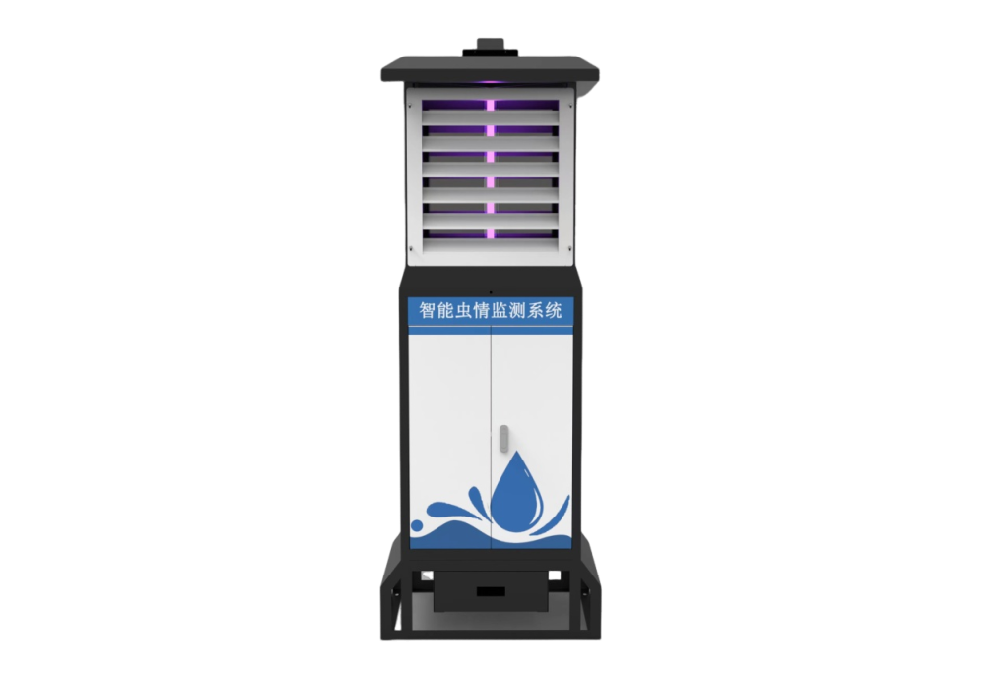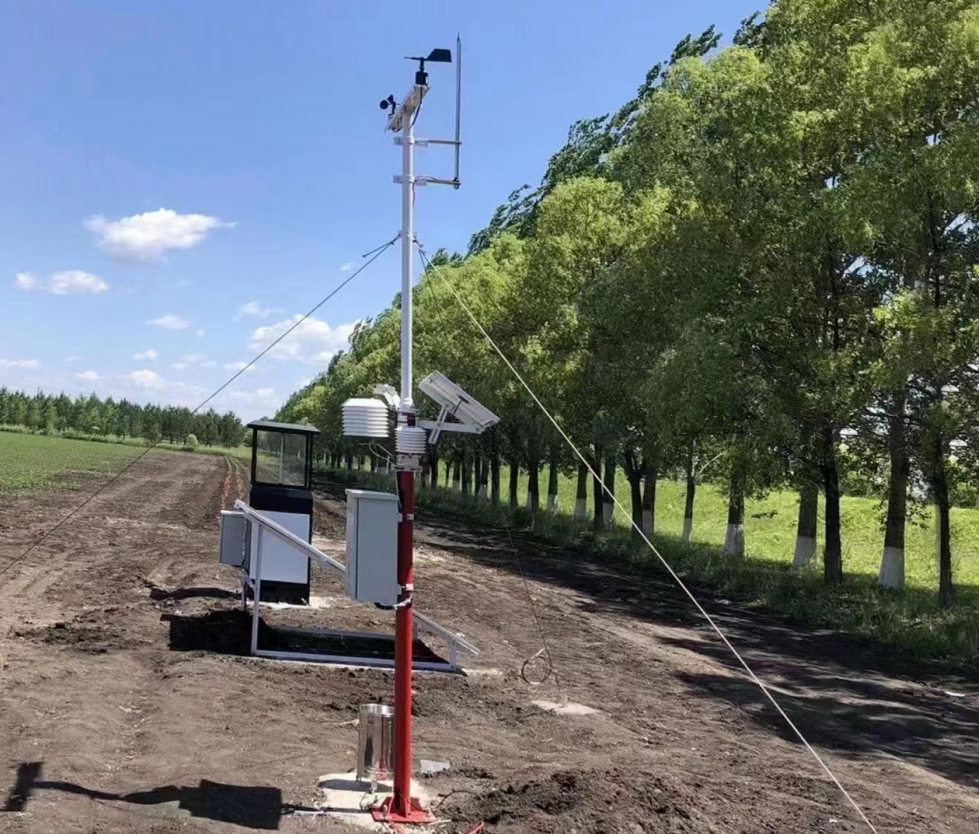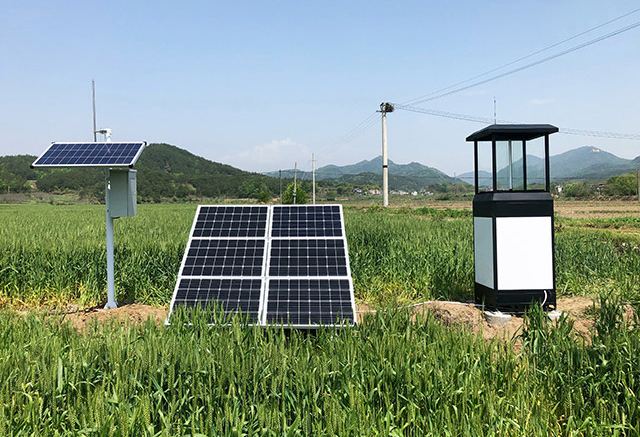

— Blogs —
—Products—
 Consumer hotline +8618073152920
Consumer hotline +8618073152920 WhatsApp:+8615367865107
Address:Room 102, District D, Houhu Industrial Park, Yuelu District, Changsha City, Hunan Province, China
Product knowledge
Time:2025-11-27 10:32:04 Popularity:111
As modern agriculture advances toward high-quality and sustainable development, traditional experience-based management can no longer meet the complex, ever-changing field environment or increasingly refined planting demands. The NiuBoL Smart Agriculture System emerges as the perfect solution. With the “Four Conditions” monitoring as its core data engine and seamlessly integrating plant-protection drones and remote sensing technology, it establishes a comprehensive, intelligent, and efficient modern agricultural management ecosystem.
The Agricultural Four Conditions Monitoring System (covering seedling condition, soil moisture, pest/weed/disease condition, and meteorological disaster condition) serves as the “central nervous system” of the entire smart agriculture platform. It delivers real-time, accurate, multi-dimensional data, forming the critical defense line for ensuring healthy crop growth and achieving precision management.
The NiuBoL Agricultural Four Conditions Monitoring System is an integrated agricultural environmental information acquisition and early-warning platform that combines multiple sensors, image recognition technology, IoT transmission, and cloud-based analytics. It continuously monitors and analyzes key ecological and biological factors across the entire farmland.
The system operates through a complete cycle of data collection → transmission → analysis → feedback:
1. Multi-source data acquisition: Sensors, insect-trapping lamps, drones, meteorological satellites, and other “scouts” collect four core datasets — seedling condition (biological), soil moisture (water), pest/weed/disease condition (biological hazards), and disaster condition (environmental).
2. Cloud-based fusion analysis: All data converge on the NiuBoL cloud platform, where professional agricultural models and AI algorithms perform deep fusion analysis, trend forecasting, and disaster early warning.
3. Precise decision feedback: Analysis results directly guide plant-protection drones for targeted spraying, irrigation systems for precise watering, or farmers for manual interventions.

The NiuBoL system consists of four tightly interconnected sub-modules, each playing a specific role in safeguarding farmland health.
Structure: High-definition cameras + AI image recognition module + data transmission unit
Measurement: Regular or real-time imaging of crops, automatically measuring plant height, leaf area, stem diameter, tiller number, leaf color, etc.
Application: Evaluate whether growth and development are normal; detect nutrient imbalances (e.g., yellowing leaves due to potassium or nitrogen deficiency).
Structure: Multi-depth soil moisture sensors (TDR/FDR technology) + data logger + monitoring station
Measurement: Sensors installed at different soil layers (e.g., 10 cm, 20 cm, 40 cm) provide real-time volumetric water content. Combined with evapotranspiration models for water balance analysis.
Application: Acts as the “irrigation brain,” guiding precise irrigation timing and volume, achieving water-saving agriculture and preventing growth inhibition or soil compaction caused by over- or under-watering.

Structure: Smart remote insect-trapping lamps, automated spore capture devices, high-definition imaging systems
Measurement Methods:
- Insects: Insect lamps use light, electricity, and AI recognition to automatically trap, photograph, identify, and count pest species and quantities (e.g., fall armyworm) for early warning.
- Diseases: Spore capture devices take high-magnification microscopic images 24/7, analyze spore count trends, and predict disease outbreak timing and severity.
- Weeds: Combined image recognition or remote sensing monitors weed species, density, and distribution for targeted herbicide application.
Structure: Field weather stations (wind speed/direction, temperature/humidity, rainfall) + remote sensing data interface
Measurement: Ground stations record local weather in real time; satellite and drone remote sensing provide large-scale disaster imagery and indices (e.g., drought index, flood extent).
Application: Early warning of drought, flood, wind damage, frost, etc., enabling farmers to take timely countermeasures (water transfer, drainage, facility reinforcement).

1. Representativeness: Choose locations representative of typical soil type, crop, and irrigation conditions in the monitoring area.
2. Depth requirement: Sensors must cover main root zones (e.g., 10 cm, 20 cm, 40 cm).
3. Tight soil contact: No air gaps around probes to ensure measurement accuracy.
4. Waterproofing: Data loggers and terminals must be placed in waterproof enclosures.
1. Drill holes vertically to preset depths using a soil auger.
2. Insert sensors horizontally or vertically, ensuring full contact with soil.
3. Backfill and lightly compact soil, restoring the original profile to prevent surface water infiltration along the probe.
4. Connect cables, secure poles, and install solar power system.
5. Power on, verify sensor readings, and test 4G/LoRa upload to the cloud platform.

| Symptom | Common Cause | Solution |
| Soil moisture value stays constant | Sensor failure, broken wire, air gap around probe | Check wiring; re-install probe ensuring tight soil contact |
| Insect lamp fails to trap insects | Aging or damaged lamp tube; blocked drainage | Replace lamp tube; clean insect collection box and drainage holes |
| Blurry/black seedling images | Lens contaminated (dew/dust); poor bandwidth | Clean lens; check signal strength or reduce upload resolution |
| Weather station data not updating | Power failure (low battery); logger frozen | Check solar charging; restart logger |
- Precision irrigation & water-fertilizer integration projects: Soil moisture as the core driver for on-demand water and nutrient supply.
- High-standard farmland & demonstration parks: Full Four Conditions deployment as the digital management hub and technology showcase.
- Efficient plant protection & green prevention: Pest/disease modules trigger early warnings and automatically generate flight missions for targeted drone spraying.
- Agricultural insurance & disaster assessment: Disaster monitoring (remote sensing + ground stations) provides quantitative data on affected area, severity, and loss for post-disaster recovery and insurance claims.

A: Yes. When soil moisture falls below the set threshold, the NiuBoL cloud platform can automatically activate pumps and solenoid valves.
A: Pest/disease monitoring identifies “where” and “what” pests are present, generates precise operation maps, and pushes them directly to drones for variable-rate, targeted spraying.
A: Satellite/drone remote sensing provides large-scale seedling condition (NDVI) and disaster information; ground stations provide high-precision local calibration—both complement each other.
A: It combines AI image recognition with optional multi-spectral analysis to detect disease spots and quantify chlorophyll/water content.
A: It captures and identifies various fungal spores (e.g., rice blast, rust, powdery mildew), focusing on trend detection rather than definitive diagnosis.
A: Our devices are low-power and transmit only small text data packets; operational data costs are very low.
A: We offer LoRa/RS485 local networking or loggers with local storage and breakpoint resume upload when signal returns.
A: Industrial-grade encapsulation, anti-corrosion materials, and periodic calibration according to soil type.
A: Yes. When temperature approaches the crop’s critical freezing point, alerts are sent instantly via app, SMS, or phone call.
A: CE, ISO9001, RoHS, and calibration certificates.
The NiuBoL Agricultural Four Conditions Monitoring System is far more than a simple collection of sensors—it is a fully integrated solution that seamlessly connects field data, AI intelligent analysis, disaster early warning, and efficient plant protection.
By providing comprehensive, precise monitoring of seedling condition, soil moisture, pest/weed/disease condition, and disaster condition, NiuBoL delivers powerful decision-making support for modern agricultural production, significantly increasing farmland productivity and resource efficiency while reducing waste and environmental impact. It stands as a solid technological foundation for advancing high-quality agricultural development and ensuring national food security.
Prev:Farmland Agriculture Weather Monitoring Station
Next:Central Nervous System of Smart Agriculture: NiuBoL Four Conditions IoT Monitoring System
Related recommendations
Sensors & Weather Stations Catalog
Agriculture Sensors and Weather Stations Catalog-NiuBoL.pdf
Weather Stations Catalog-NiuBoL.pdf
Related products
 Combined air temperature and relative humidity sensor
Combined air temperature and relative humidity sensor Soil Moisture Temperature sensor for irrigation
Soil Moisture Temperature sensor for irrigation Soil pH sensor RS485 soil Testing instrument soil ph meter for agriculture
Soil pH sensor RS485 soil Testing instrument soil ph meter for agriculture Wind Speed sensor Output Modbus/RS485/Analog/0-5V/4-20mA
Wind Speed sensor Output Modbus/RS485/Analog/0-5V/4-20mA Tipping bucket rain gauge for weather monitoring auto rainfall sensor RS485/Outdoor/stainless steel
Tipping bucket rain gauge for weather monitoring auto rainfall sensor RS485/Outdoor/stainless steel Pyranometer Solar Radiation Sensor 4-20mA/RS485
Pyranometer Solar Radiation Sensor 4-20mA/RS485
Screenshot, WhatsApp to identify the QR code
WhatsApp number:+8615367865107
(Click on WhatsApp to copy and add friends)
